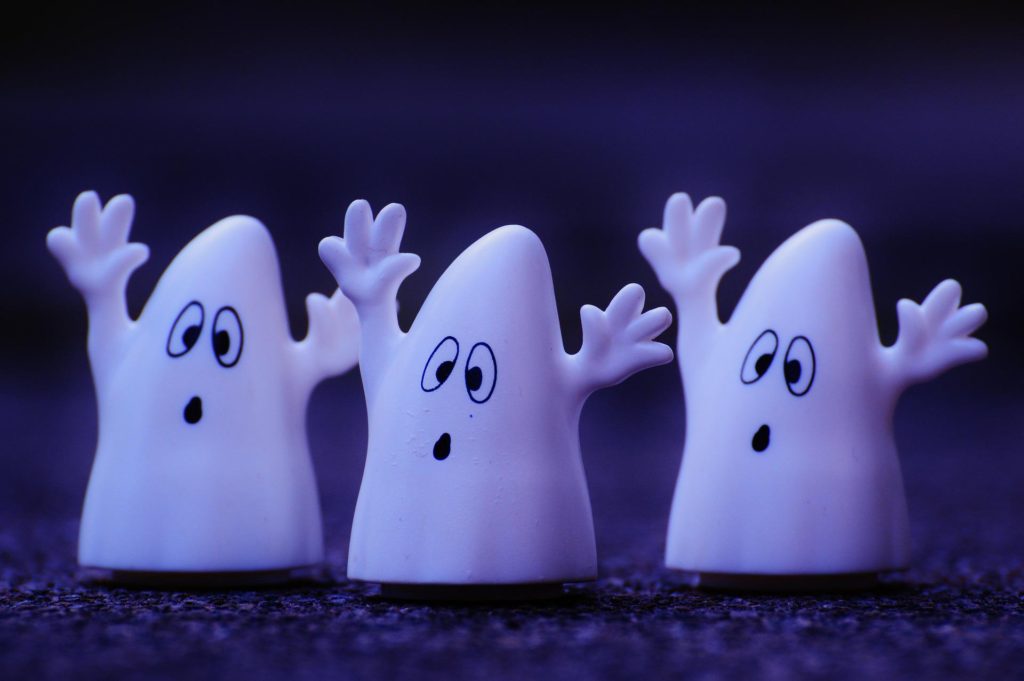May 30, 2022
Scooby-Doo Gothic: Beyond Supernatural Explained
Unless you’ve spent the last five decades on Mars, you must know Scooby-Doo – the fearless (cough, cough) cartoon dog chasing ghosts. Believe it or not, what we could refer to as Scooby-Doo Gothic goes back more than 200 years, to Ann Radcliffe’s The Mysteries of Udolpho (1794).
How, you might ask. What on earth could be the connection between one of the first texts of the Gothic canon and a cartoon show of the late 20th century?
The concept worth examining here – as you might have deducted from the title – is that of the supernatural explained; particularly, how it’s related to the supernatural accepted.
Briefly, there has been a long-standing tradition to divide Gothic texts into the one or the other category. We’ll take a closer look at both of them, and then I’ll explain why I think the differentiation itself is flawed.

Scooby-Doo Gothic: Supernatural Explained
Supernatural explained refers to, well, the Scooby-Doo Gothic: It wasn’t a ghost – because there are no ghosts, you scaredy cat dog. It was just a criminal wearing a mask. In The Mysteries of Udolpho, mentioned above, and much of the Gothic of this style, typical explanations include a woman’s frail mental state, illusions, and such narrative tricks.
To a great extent, this is a cop-out. The idea is to make the reader believe (for much of the narrative) that something supernatural is at play, but then – usually just before the end – it’s all explained away as something mundane and natural.
The reason I call it a cop-out is because it’s manipulative in a non-creative way. It’s little more than a text making fun of its readers for believing what it wanted them to believe in the first place. It’s a fairly awful writing gimmick.
Is Supernatural Accepted any Better?
Well, I’ll tell you what it isn’t for sure: Gothic! Though, indeed, the term “Gothic” is often used as an umbrella term for various neighboring genres, I’d argue that pure Gothic can neither accept nor reject the supernatural. I’ve talked about this a lot:
- The differences between Gothic and other modes.
- The appeal of “true” stories in Gothic and horror.
- Gothic ambiguity.
- How to write a good horror story.
- How to write fantasy.
I’ve even made a program meant to sort this whole thing out!
To spare you having to go through all these posts – though if you’re even remotely interested in the topic, you ought to – here’s the crux of the matter: “Supernatural accepted”, in a sense the opposite of the Scooby-Doo Gothic, isn’t Gothic either. It’s either fantasy (if it’s not seen as supernatural from within the context of the story), or horror (if the characters themselves also consider it supernatural).
Are there gradations in between? Unfortunately, yes. And they’re very, very problematic. There are all sorts of issues stemming from narratives that can’t quite find their ontological footing. Read the posts linked above for more.
What Is the Role of the Scooby-Doo Gothic?
If we wanted to focus on the cartoon, the answer would be: I don’t know. Yet I can offer you an educated guess: It wanted to ride on the popularity of what I’d term new wave Gothic – or perhaps postmodern Gothic – that began in the early 70s (and timidly even earlier, perhaps with Psycho). The Scooby-Doo Gothic was a fun, easy, “safe” act of imitation: You take away everything that matters in the Gothic – see more information below – and you leave (some of) the aesthetics alone.
That is precisely the function of the Scooby-Doo Gothic as a concept. The truth is that it has had a long run in the Gothic canon because it has offered a neat way to avoid disruption. With the Scooby-Doo Gothic, there is no need to ponder on metaphysical implications, existential questions, and all that. With supernatural explained, Scooby-Doo Gothic, nothing changes. At the end of the narrative, the world is delightfully “back to normal”.
For this reason alone, Scooby-Doo Gothic isn’t Gothic either. Traditionally, the Gothic was a way to express the inexpressible and speak the unspeakable. Instead, the Scooby-Doo Gothic is mere entertainment.
The Gothic Asks too Many Uncomfortable Questions
Allow me to quote Tzvetan Todorov once again, because I find his approach spectacularly eloquent.
In a world which is indeed our world, the one we know, a world without devils, sylphides, or vampires, there occurs an event which cannot be explained by the laws of the same familiar world. The person who experiences the event must opt for one of two possible solutions: either he is the victim of an illusion of the senses, of a product of the imagination – and laws of the world then remain what they are; or else the event has indeed taken place, it is an integral part of reality – but then this reality is controlled by laws unknown to us …
The fantastic occupies the duration of this uncertainty. Once we choose one answer or the other, we leave the fantastic for a neighboring genre, the uncanny or the marvelous. (1973, 25)
Todorov, Tzvetan. The Fantastic: A Structural Approach to a Literary Genre. Translated by Richard Howard. Ithaca: Cornell University Press, 1973.
To suspend judgment on this matter, perhaps counterintuitively, is not cathartic. Instead, maintaining this Gothic ambiguity prevents us from excluding either uncomfortable possibility – that we are insane or that reality as we know it doesn’t exist.
Why bother, when we can just watch cartoons and see everything merrily being as it always has? Scooby-doo – just like Scooby-Doo Gothic, albeit more abstractly – is about outsourcing responsibility of thought.
Sit back, relax, and let heroes figure it all out.
Comments are closed for posts older than 90 days